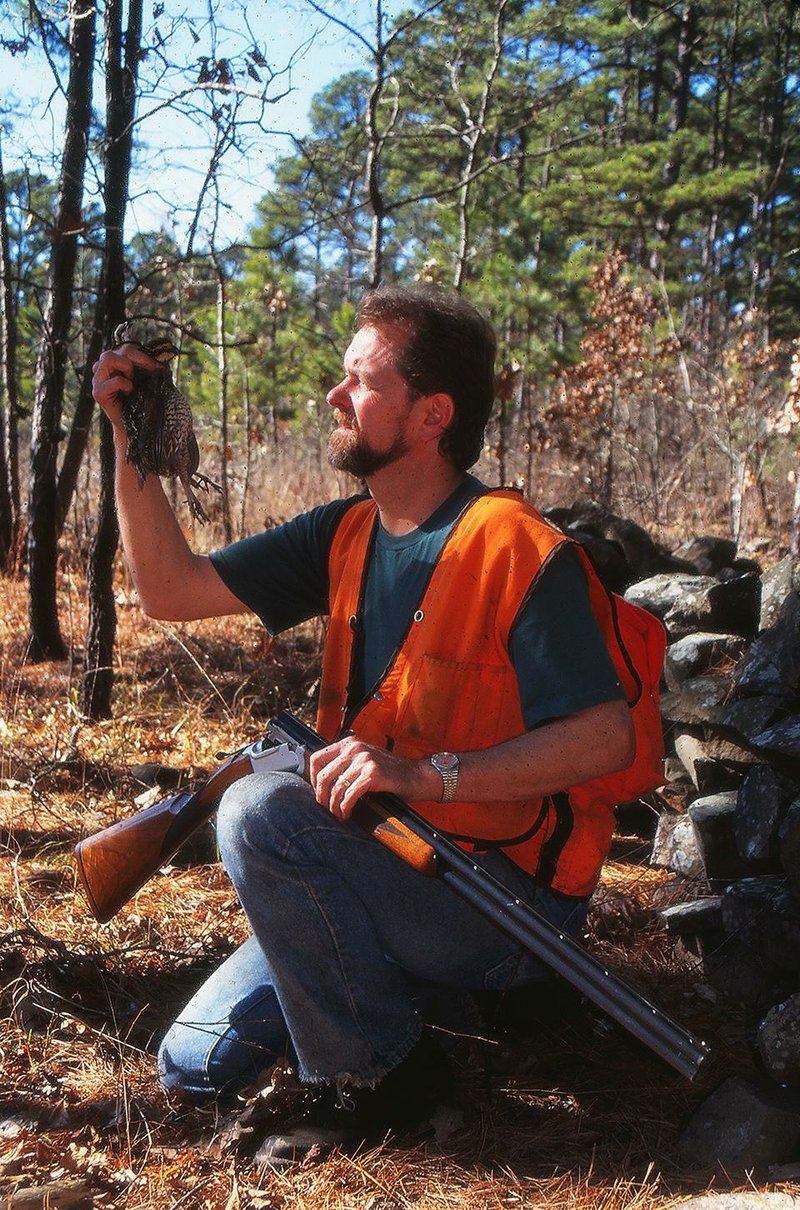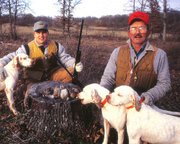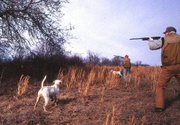SPRINGDALE -- On a day when the Arkansas Game and Fish Commission received its new strategic plan for managing bobwhite quail, Commissioner Ford Overton wore a necktie bearing images of quail.
It was, coincidentally, the day after the commission toured the Pea Ridge National Military Park, where efforts to restore the battlefield to its 1860s appearance are expected to benefit quail.
These things represent hope for an 8-ounce game bird that once symbolized the southern sporting culture. For those who grew up in the 1970s and before, the bobwhite's distinctive two-note call really was the Song of the South.
The late George Purvis, who for decades was the face and voice of the Arkansas Game and Fish Commission, said that quail hunting once dwarfed the popularity of duck hunting in Arkansas. Joe Mosby, the longtime outdoor editor for the Arkansas Gazette and a member of the Arkansas Outdoor Hall of Fame, has echoed that sentiment, as well.
In his 1995 book, From Ridgetops to Riverbottoms, A Celebration of Outdoor Life in Tennessee, Sam Venable, the longtime outdoor editor at the Knoxville News-Sentinel, noted the contradictory ethics among Tennessee hunters. One observation was that some who have no qualms about shooting turkeys off a roost or spotlighting deer consider it sacrilege to shoot a quail on the ground.
Though far from threatened, quail have become irrelevant to Arkansas's sporting landscape. The AGFC, with encouragement from the Knoxville-based National Bobwhite Conservation Initiative, appears committed to restoring them to a place of prominence.
While presenting the Strategic Quail Management Plan to the commission Wednesday, the small game biologist for the AGFC, Clifton Jackson, said bobwhites are currently the "greatest conservation challenge in the Southeast."
"Land use and weather are the two most dominant survival factors," Jackson said, adding that previous quail restoration efforts produced only temporary success.
Discredited practices include releasing pen-raised quail into the wild. Jackson said that only 20 percent of wild quail survive to adulthood. Survival rates for liberated birds are considerably less.
"Pen-raised quail have been let out by the millions, and that didn't work out," Jackson said. "The days of trying to do a little here and a little there have proven unsuccessful. That makes it hard for people to understand that habitat is the solution.
"What we need right now is a success story."
Because the overwhelming majority of Arkansas is privately owned, the commission's ability to produce a comprehensive success story is limited, Jackson said. Private landowners are essential to success, but quail restoration hasn't caught fire with them. He mentioned the Pea Ridge project as an example. Quail can flourish in the park, but without habitat on adjacent private lands, quail will not expand into those areas.
"It's critical to have a private land component," Jackson said. "The [quail] focal area is about 3,800 acres. We sent 100 invitations to adjacent landowners [to discuss habitat enhancement opportunities]. Only 14 people showed up."
Members of the commission are too young to remember the glory days of quail hunting in Arkansas, but Commissioner Fred Brown of Corning recalled his excitement when his father took him on his first quail hunt.
"People don't realize how exciting it is," Brown said. "I enjoy it as much as I do duck hunting."
Commissioner Ken Reeves of Harrison lamented the disappearance of quail in northern Arkansas.
"I have two bird dogs in a kennel at home," Reeves said. "Neither of them has ever smelled a wild quail."
Where to start?
Jackson said it takes four acres of native grasses to support one covey of quail, which typically contains about a dozen birds. Providing that much habitat statewide requires high-level partnerships with individual and corporate landowners, Jackson said.
The Strategic Quail Management Plan identifies five key areas that have high quail restoration potential in Arkansas, according to rankings compiled by biologists working for the National Bobwhite Conservation Initiative. In western Arkansas they include all of Scott County, most of Logan and Franklin counties and large portions of Sebastian and Polk counties.
Areas with high potential in northern Arkansas include all of Boone and Marion counties, and the northern parts of Searcy and Newton counties.
High-potential areas in northeast Arkansas include all of Fulton and Sharp counties, and large portions of Lawrence and Randolph counties.
A large amount of high-potential area exists in east-central Arkansas, according to the NBCI, including almost all of White, Prairie, Lonoke, Faulkner, Arkansas and Lincoln counties. Almost all of Cross and and St. Francis counties are high-potential areas, as well.
Nearly all of Arkansas has medium potential, according to the NBCI. There are even areas of high to medium potential in Benton and Washington counties, where large tracts of land are being lost rapidly to development.
The Commission, which has largely ignored quail for at least a decade, seems to be committed to restoring bobwhites to Arkansas. Adopting a strategic quail management plan is a start.
Success, Jackson said, will be a community effort.
Sports on 06/21/2015



